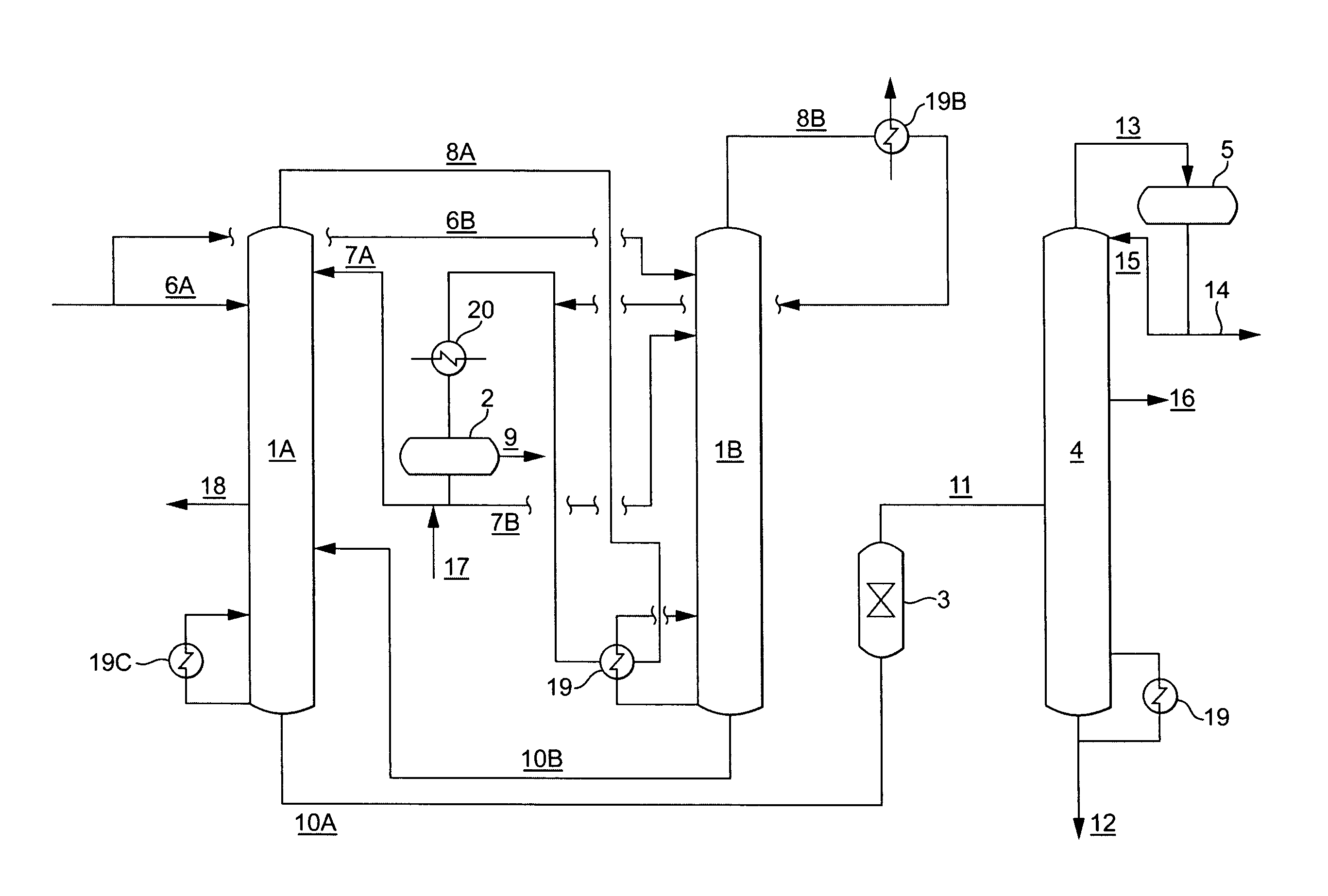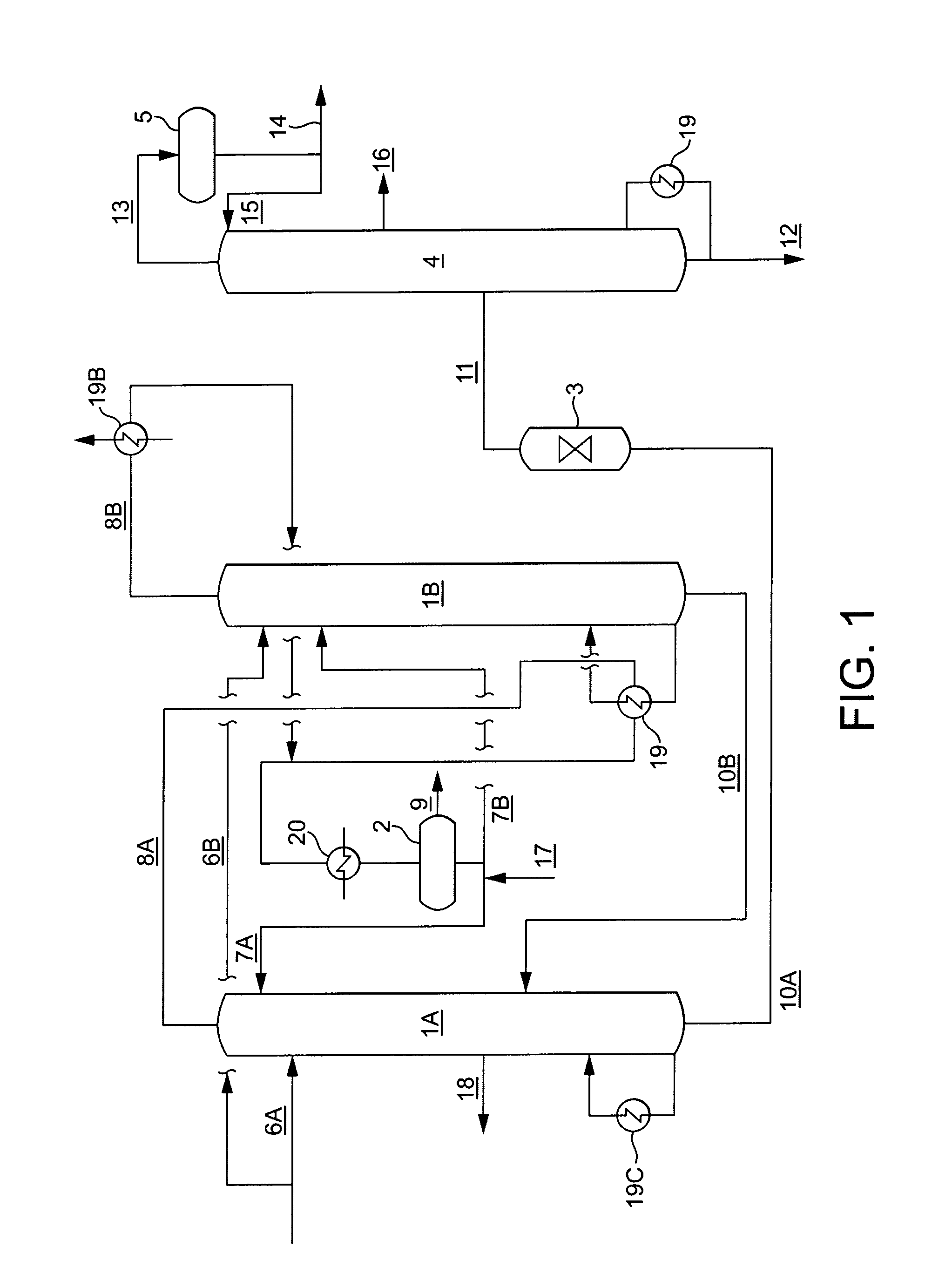Treatment of Phenol
a technology of phenol and phenolic acid, which is applied in the field of phenol treatment, can solve the problems of difficult or almost impossible to remove with conventional distillation, extremely harmful to a catalyst of the resin type, and the inability to substantially complete the removal of phenol with distillation, and achieve the effect of efficient phenol purification process
- Summary
- Abstract
- Description
- Claims
- Application Information
AI Technical Summary
Benefits of technology
Problems solved by technology
Method used
Image
Examples
example
[0098]The Example illustrates the importance of the extractive distillation in providing a low impurity feed. Two phenol streams were passed through a bed of acidic resin (Amberlyst 16) using a residence time of 60 minutes. Feed 1 was a typical feed for a resin bed reactor. Feed 2 was a typical feed for extractive distillation. The concentrations of AMS, mesityloxide, and 2-methylbenzofuran were about 1000 times higher or more in the extractive distillation feed (Feed 2) compared to the feed to the resin bed (Feed 1). The hydroxyacetone concentration was 17 wppm in Feed 1 and 7 wppm in Feed 2.
[0099]The formation of heavy components in the resin bed includes the formation of some polymers. This causes the resin to eventually become fouled with polymer. A larger amount of reactive components in the feed also results in the formation of a larger amount of polymer. The difference in the concentrations of reactive components has a significant effect on the catalyst life.
[0100]As can be s...
PUM
| Property | Measurement | Unit |
|---|---|---|
| temperature | aaaaa | aaaaa |
| temperature | aaaaa | aaaaa |
| temperature | aaaaa | aaaaa |
Abstract
Description
Claims
Application Information
 Login to View More
Login to View More - R&D
- Intellectual Property
- Life Sciences
- Materials
- Tech Scout
- Unparalleled Data Quality
- Higher Quality Content
- 60% Fewer Hallucinations
Browse by: Latest US Patents, China's latest patents, Technical Efficacy Thesaurus, Application Domain, Technology Topic, Popular Technical Reports.
© 2025 PatSnap. All rights reserved.Legal|Privacy policy|Modern Slavery Act Transparency Statement|Sitemap|About US| Contact US: help@patsnap.com


